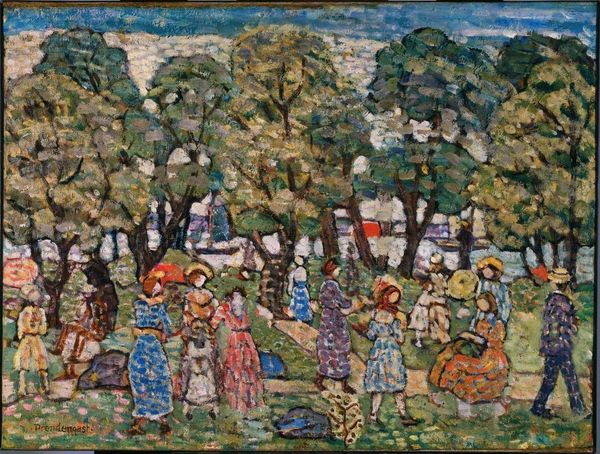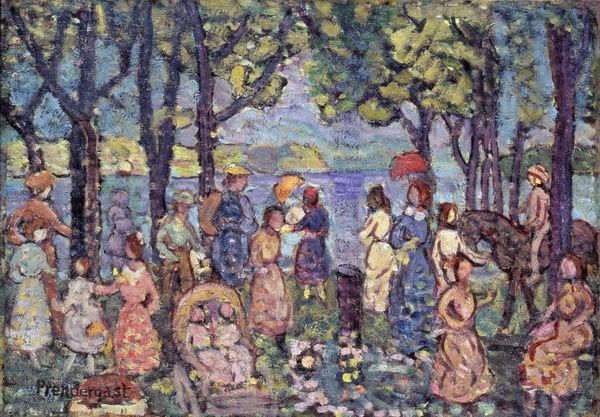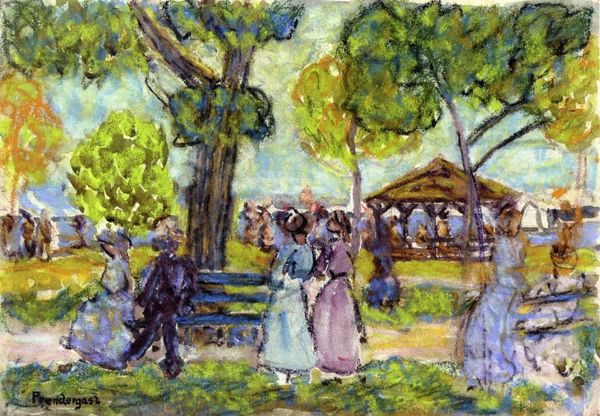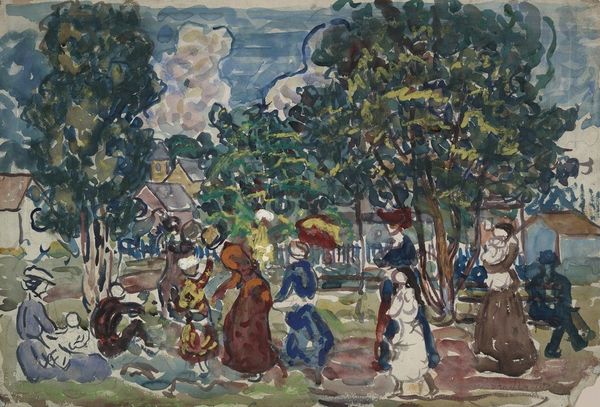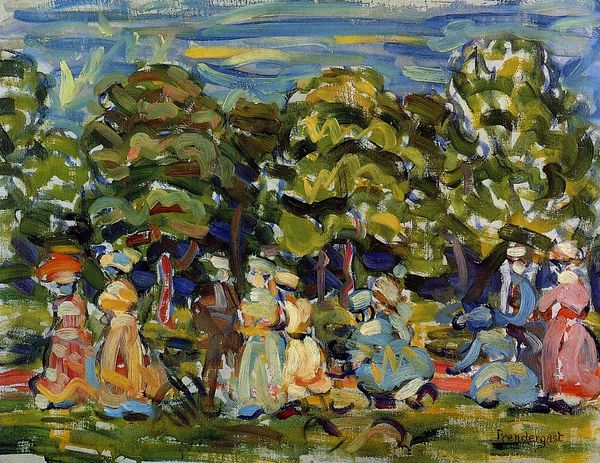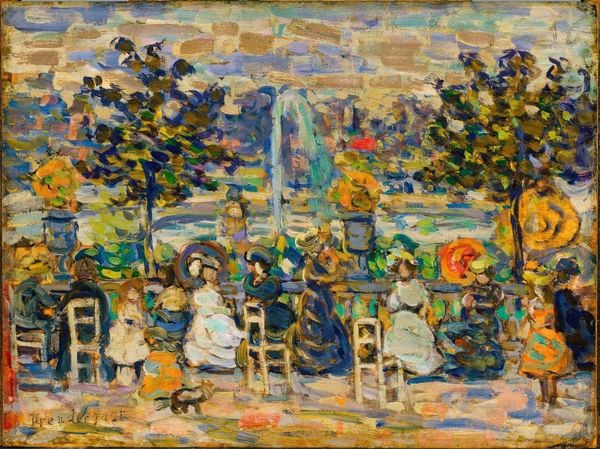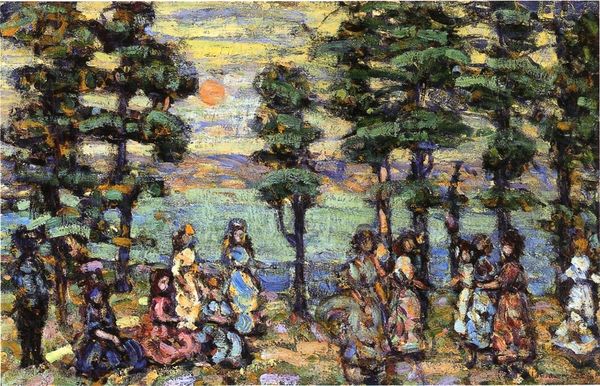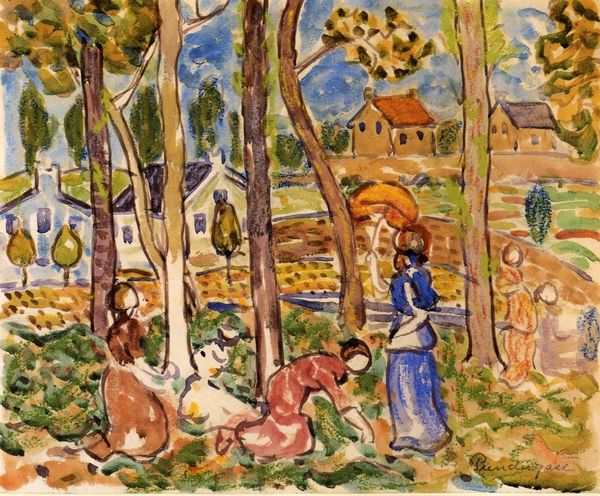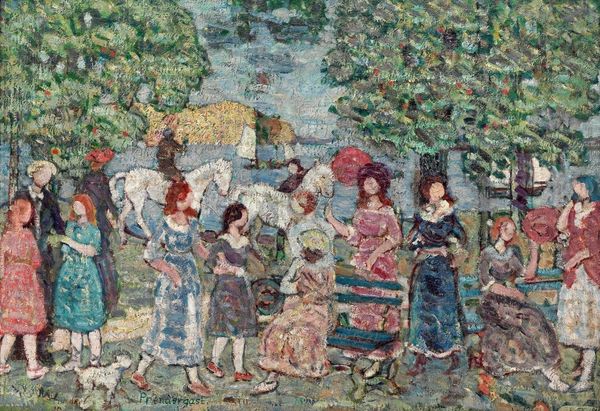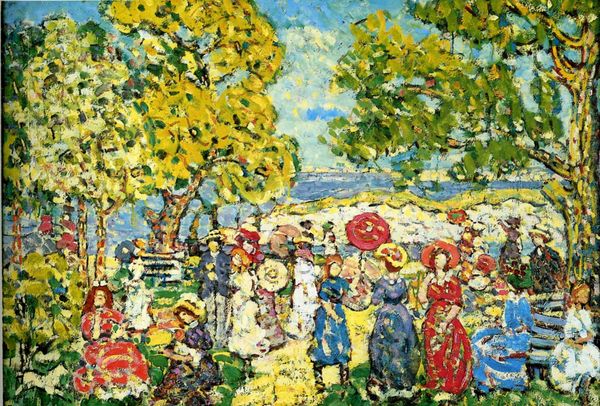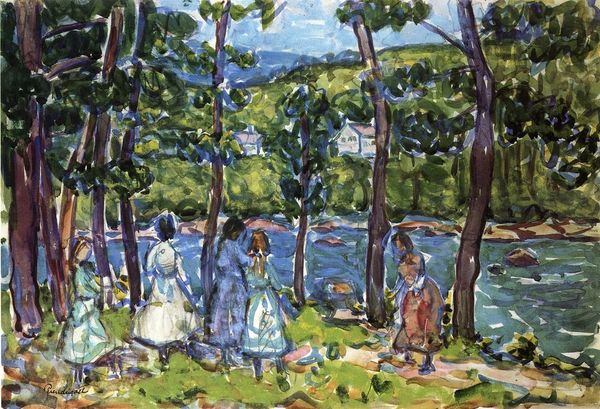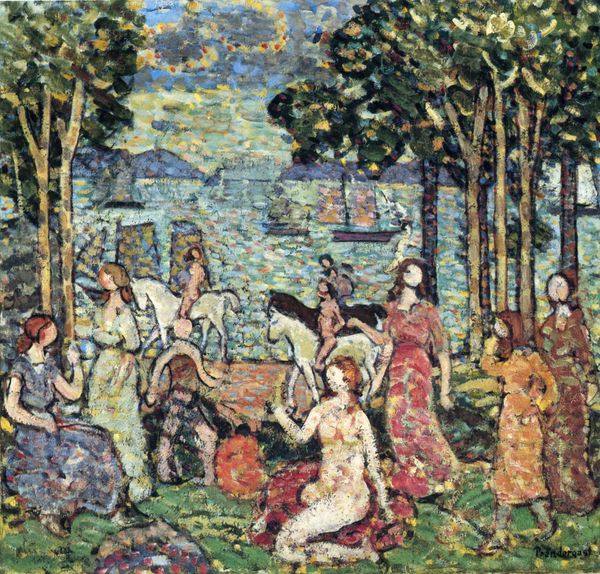
Dimensions: 50.8 x 60.96 cm
Copyright: Public domain
Curator: Today, we're looking at Maurice Prendergast's "Children in the Park," painted around 1910. What are your initial impressions? Editor: It's immediately striking—almost overwhelmingly cheerful. The light feels filtered and dappled, and there’s a looseness to the brushstrokes that almost dissolves form. The colours, though, are quite vibrant for such a scene. Curator: Exactly. Prendergast, deeply influenced by Post-Impressionism, here employs what some term a kind of "naive" style, with simplified figures and vibrant colour juxtapositions to capture a scene of leisure. He had unique ways of addressing anxieties and class stratifications. The rendering here shows a particular emphasis on childhood and freedom from those burdens. Editor: I'm fascinated by the materiality itself—the layers of paint. You can almost feel the physical act of applying each dab of colour, building up the scene bit by bit. The making process seems really fundamental. How would this plein-air scene engage differently than if produced as an atelier work? Curator: That's a crucial observation. He was definitely engaging with modern theories of public space and accessibility by representing the immediacy of working 'en plein air.' And who populates that space, is not by chance, with a multitude of children that occupy and freely create their space. Editor: So the very *means* of production—outdoor painting, quick strokes—echoes this ethos of democratized art, freed from formal constraints? It speaks to the physical labor too—the body moving, recording light. Are the choices he is making with form linked to ideas about the new types of art available to people at the time? Curator: Precisely. This connects strongly with turn-of-the-century ideas about social reform and the visibility of youth as symbolic subjects, their activities being the embodiment of carefree energy. Editor: It all circles back to the materiality, then. How these physical applications of pigment capture and solidify those social observations, rendering fleeting moments into tangible historical commentary through method and art object. It gives the image a powerful, physical reality in spite of the impressionist nature of his work. Curator: Yes, through that lens, Prendergast's work reveals hidden dimensions about public interactions and representations within these landscapes. Editor: Indeed, stepping back, examining it like this heightens its social, artistic, and very physical presence.
Comments
No comments
Be the first to comment and join the conversation on the ultimate creative platform.
